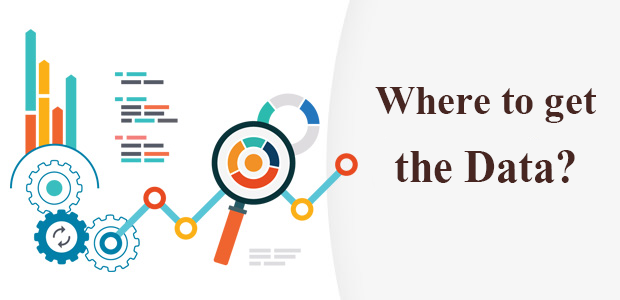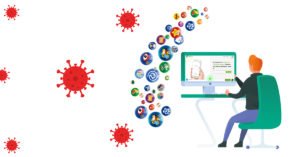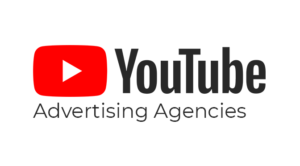Digital Marketing is all about reaching to the right people and bequeathing them the right content. But the major mistake that most of the businesses are doing is, not reaching to the right people.
It is very important to identify and define your target audience. The Internet is whelmed with all kind of people. Everyone out there may not be the people interested in what you have in store for them.
You will have to understand the type of audience you want to reach to? You would actually need to work on the parameters of who, what, why and where to delineate your audience.
If you think you can just establish a brand by blasting out a few ads, emails, posts and messages on the social media and your sales will start blooming, you are definitely wrong.
If you don’t know whom to focus on, all your hard work goes down the drain. The saying that, “If you sell to everyone, you will end up selling to no one,” defines the entire acumen of the target audience.
Analyzing your audience is important because it ensures more consistency and gives you direction for your marketing.
Work on the four W’s
- Who – Find out who really are the people, who may share the same interest as you? Who may be interested to know more about your product and services? Who can be your buyers? The more precise you get, better the results.
- What – Find out what your customers want. If you can understand their demands, you will be able to adapt your value proposition and ultimately your brand is recognized for what you sell.
- Why – Find out the reasons why people will be interested in buying whatever you have to offer? Understand their needs and demands and then sell them what they want.
- Where – Find out your target area, after getting an idea about your audience, you need to know where to sell. If you know who your target audience is, what they want and why will they buy your services the final thing is where to reach them?
Apart from the four W’s, there are quite a few other things you will have to work upon, before finalizing your niche specific marketing strategy.
Now, finding the right audience can sometimes be as difficult as finding the needle on the haystack. Just imagine how hazardous it can be if a women beauty product company is targeting men and children as their audience?
It would be a total disaster right? Therefore, it is crucial for your brand success to build a buyer persona. There are a few spheres, based on which the persona can be built.
- Age-based Audience – It is important to know, who will be buying your product and services. Different age people behave differently, therefore you need to understand, which age group you have to focus on. Also, there are possibilities that you may not have a specific age group, in that case, try to keep your market as narrow as possible. For example, if you are dealing with baby food, obviously you will not be targeting the newborns, you will have to focus on the parents. Similarly, if you are an IT company, looking to sell your services you cannot target the teenager as your audience.
- Location-based Audience – As much as all brands want to establish their identity globally, it may not be a very good idea. Not everyone can sell everywhere. You need to be very calculative when it comes to locations. Plan strategically and analyze, if you would be able to provide your services around the world. Also, research about the locations, which will need your services, the most. Both your time and money would be wasted if you were selling at a location that does not require your services.
- Gender-based Audience – Identifying the gender you need to focus on is very crucial, until and unless your product is not gender specific. Like stated above, it would a total failure if you run a beauty ad campaign targeting men and children, while your beauty products are for women only. Understand the requirement of the market and then plan your campaigns accordingly.
- Industry-based Audience – Another most important thing to understand before stepping up into the market is your industry type and whom do you want to sell. There can be various criteria and patterns for sale. You can be a business, selling your products and services to other businesses. Or you could be a company, offering your products to consumers.It is important to know if you are a B2B (Business to business) company or a B2C (Business to consumer) company and plan your target strategy accordingly.
Where to Get the Data?
Now the question that might pop up in your mind is, how in the world can to collect all this information and analyze your audience? Well, there are myriad solutions for this also. Some of them are:
- Google In-market Segment – This tool offered by Google, gives you the insights of visitors, who are already searching and comparing your brand products with others. With the help of the data provided by Google Analytics, you can find about the people who may be interested in your products for a limited period of time.
- Google Affinities – Unlike In-market segment, Affinities gives a little deeper drift about your audiences. It gives you an idea about the person’s lifestyle, interests, habits and identity. This data can help you understand a person’s long-term interests.
- Social Media Insights – There are a few tools provided by almost all social media platforms that allow you to measure your company performance. These tools provide you with the metrics of your social media like page views, reach, page likes, demographics, affinities etc.
With all the information collected, it may be a difficult task to segment the data and maintain records. Well, there is a solution for that too. With the technology changing and getting advanced, everything is actually possible now. With the use of Artificial Intelligence, you can segment all your social media and online audience into systematic persona profiles.
Map Your Journey In The Right Direction To Reach The Right Audience
Many businesses competing in the online world to mark a foothold, know the importance of targeting a specific Audience. This is a crucial step to decide the effectiveness and future of all your marketing campaigns. Therefore, while maneuvering digital marketing plans, the target audience should be the base of all gimmicks.
According to the data, 43% of the companies spend more than half of the budget to reach out to their specific target audience. 84% of the companies believe that money invested on target audience will return with good interest in the coming years. You need to ensure that your campaigns and marketing strategies are heading in the right direction to reap benefits.
- Understand What You Are Selling – You have to get the in and out knowledge about your product or services that you are selling. Once you understand your side, it will be easier to know about your target audience. You should have the answer to questions like, who would benefit the most from your services or products? What are the USP’s of your product? Is your product affordable and effective for all? All these answers will help you define fruitful marketing efforts. You can formulate all these answers easily by analyzing the interests, common traits and characteristics of your regular/best customers.
- Segment the Analysis, Build Persona – Building persona is basically gathering all the details and information about your audience. Audience persona gives the details about your audience’s lifestyle, characteristics, interests, needs, demographics etc. While building audience persona, you should keep three things in mind.
- Demographics – this covers location, gender, income level, age, education, profession, marital status etc. This will basically build the basic details about your audience.
- Psychographics – this will give you insights like the habits, hobbies, values ethic etc. These details will help you with the reasoning for your audience’s engagement with your brand or product.
- Technographic – this basically, gives you the analysis of the technology adoption and habits of your audience. Like which website they visit the most or about their social media habits etc. The technographic analysis will help you deliver the content based on their technological habits.
- Monitor Analysis Regularly – If you wish to take full advantage of the analytics gathered, you need to keep a regular check on them. Monitoring your analytics regularly will help you to serve better content, based on what the audience wants to see. By monitoring the analysis regularly, you can get some other valuable insights also like:
Referrers – Gives the details about the area or region, which is generating the most traffic for your business. This includes data on organic search, social media and other websites.
Device Usage – Knowing about the most used devices by your target audience helps you to know what type of content and which format you should use to ensure good online presence. - Target on Niche Websites and Influencers – Reaching out to your target audience through your own website or other social media platforms is not sufficient. You need to widen the perspective to be as much visible as possible. For this, you need to show your self on other niche websites as well. Look for other websites that share the same interests as you and publish on those websites too. You can also harness the power of influencer marketing. This tactic will help you to reach to your target audience more quickly and efficiently. Pitch other websites for guest posts. This will not only increase your popularity but also get you increased traffic and conversion.
While dealing with influencers marketing, the most important thing to keep in mind is the goal you want to achieve with them. It is also crucial that the influencer you choose should be compatible with your audience analytics and their interest.
Use Social Listening Tools –
Only knowing about your target audience is not enough. For long-term goals, you need to be able to retain those audiences for a longer timer. You can do this by using social listening tools like Twitter, Facebook, Hashtags, BuzzSumo, HootSuite etc. By using the social listening tools, you will get to know about the trending topics or probably the topics that your audience is interested in. Not just the topic, but you can also understand the demand of that time or general preferences.
Some of the important facts and figures regarding the target audience are:
- 38.6% and 19.9%, of advertising dollars go to Google and Facebook respectively.
- From the total time spent online, 33% is on social media sites.
- Out 10, 4 Internet users have admitted that they follow their favourites on social media.
- 37% of buyers use social media for purchasing decisions.
- Brand awareness can be increased by 46% by appearing on mobile search.
- 72% of consumers want that their favourite brands should share discounts and sale offers on social media.
The above-mentioned tips and points should be helpful for you in identifying your target audience. And by now it may be clear why having a target audience is so important. Considering the current scenario of the marketplace, it is imperative that all the marketing strategies should include special attention to knowing and retaining your target audience.
Any business who is customer focused is more appealing to its audience and partners. You know what you have to sell because it is your service and your product. Now you know whom you have to sell it because you have done the groundwork and researched your target audience. And lastly, you are regularly maintaining and keeping a check on customer analytics. These steps will ensure you increased conversion rate and better ROI.







Getting to know the people who matter to your business helps understand what matters to them.
VERY NICE POST THANK YOU FOR SHARING SUCH A INFORMATION regards:seecarrer